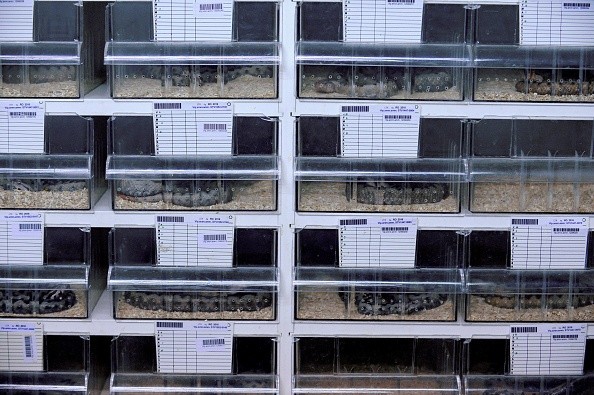Authorities claimed Tuesday that a guy who tried to slither past US border guards in California had 52 lizards and snakes hidden in his trousers.
When the guy arrived at the San Ysidro border crossing with Mexico on Feb. 25, he was driving a vehicle and was pulled aside for extra examination, according to U.S. Customs and Border Protection made the announcement in a statement.
The suspect was arrested for wildlife smuggling

According to WECT News, agents discovered 52 live reptiles wrapped up in little pouches "hidden in the man's jacket, pants pockets, and crotch area," according to the statement.
There were nine snakes and 43 horned lizards confiscated. According to officials, several of the species are deemed endangered.
The suspect, a 30-year-old American citizen, was apprehended on charges of unlawful wildlife smuggling. As per BBC.
According to CBP authorities, some of the animals are vulnerable and have been isolated from other animals in "a secure and safe facility."
According to Sidney Aki, CBP director of field operations in San Diego, California, smugglers will use any means imaginable to get their merchandise, or in this case, live reptiles, across the border.
On this occasion, the smuggler sought to deceive CBP agents in order to transport these animals into the US without regard for the animals' health and safety.
What is wildlife trafficking?
The unlawful trading, smuggle, poaching, abduction, or collection of endangered species, protected wildlife, including animals or plants subject to harvest quotas and governed by licenses, derivatives, or products thereof, is referred to as wildlife trafficking.
However, there is no globally acknowledged meaning of the phrase, and many countries and organizations use alternative language. As per the UN Office on Drugs and Crime.
This may begin with illegal exploitation of natural resources, such as elephant poaching, destruction of a rare orchid, uncontrolled logging of forests, or unlicensed netting of sturgeons, according to the ICCWC.
It also covers the concealing and laundering of financial gains derived from these crimes.
According to WCS wildtrade, some of these crimes will occur primarily in the country of origin, while others will occur in both the country of origin and the country of destination, where live wildlife or flora specimens, or their parts and derivatives, are eventually consumed.
A strong and rapidly expanding demand for a variety of products around the world is at the heart of illegal wildlife trafficking: bushmeat; additives for traditional Chinese medicine; exotic pets; jewelry, trinkets, and pieces of equipment such as chess sets; furs for uses ranging from coats to traditional costumes; and trophies.
The Convention on International Trading in Endangered Species of Wild Fauna and Flora (CITES), which now has 170 member nations, governs wildlife trade.
Illegal wildlife trade, on the other hand, is a widespread and important conservation issue that has a detrimental impact on the viability of many wildlife populations and is one of the biggest dangers to vertebrate species' existence.
Wildlife trafficking laws and regulations differ from nation to country. Violations of environmental, forest, wildlife, fishery, endangered species, or protected areas legislation may result in administrative, civil, or criminal consequences, depending on the jurisdiction.
© 2025 NatureWorldNews.com All rights reserved. Do not reproduce without permission.





